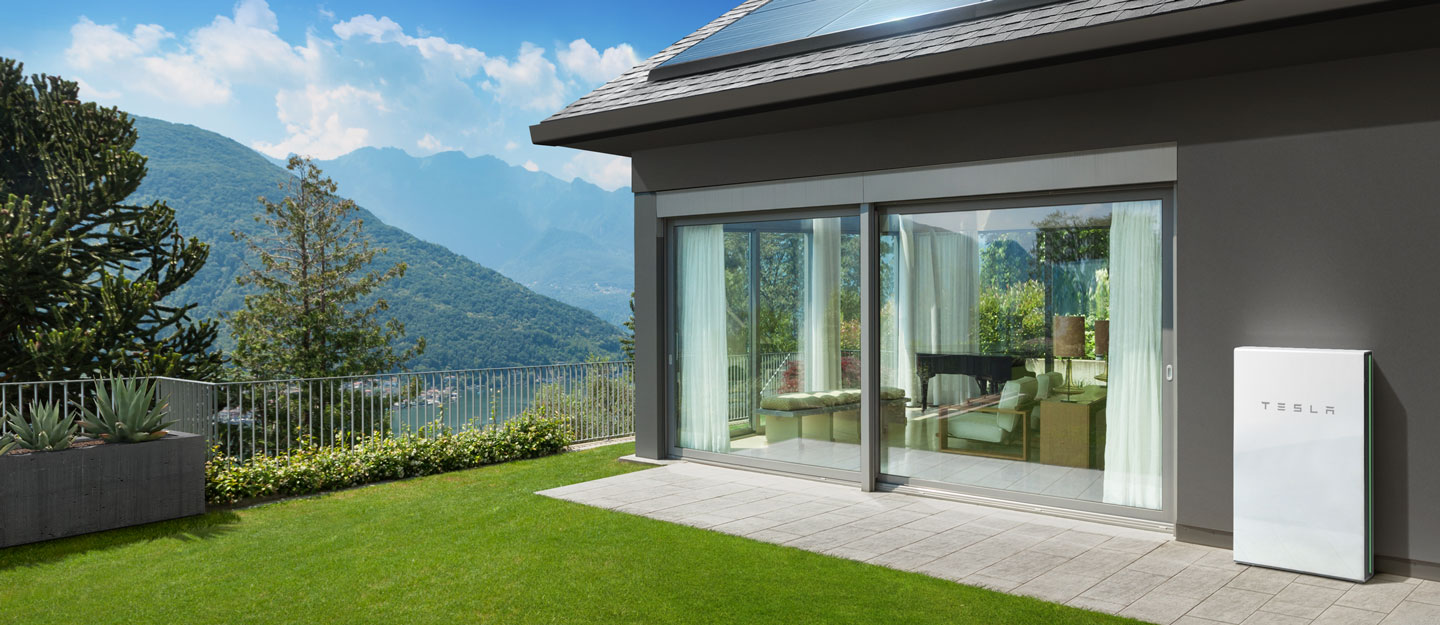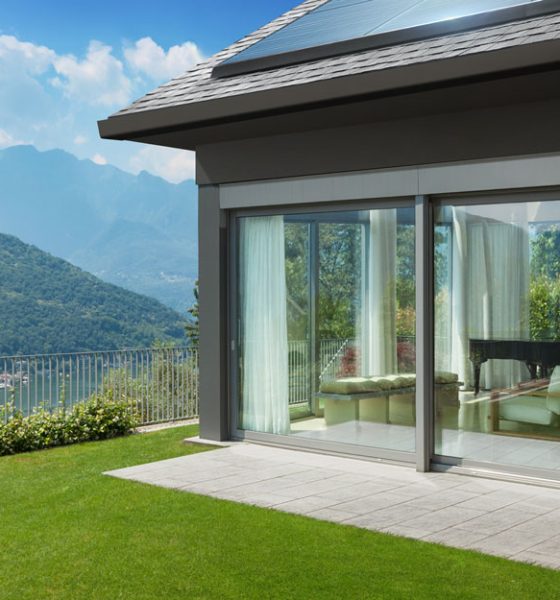

Energy
Tesla smart HVAC systems gain potential market with Australia’s ~AU$800M energy initiative in Victoria
Victoria’s comprehensive ~AU$800 million home energy package may lead to a potential market for Tesla’s HVAC system in Australia. Elon Musk has shown particular interest in Tesla developing an integrated home HVAC system, mentioning the product as far back as his initial appearance at the Joe Rogan Experience podcast in 2018. Victoria may have just made an investment that could provide a potential market for Tesla’s integrated HVAC system.
Recently, Energy minister Lily D’Ambrosio announced that the Andrews Ministry will invest approximately AU$797 million in a home energy savings package. The initiative means to encourage the shift to more smart energy efficient appliances and integrated home systems in households, rental properties, and businesses in Victoria.
Some parts of the initiative could make Victoria a good market for Tesla’s integrated HVAC system in the future. According to Renew Economy, the Ministry plans to invest AU$335 million to help low income earners replace old wood and electric or gas-fired heaters in their homes. The small renovation could save over 250,000 households AU$300 to AU$900 in their power bills. Another AU$112 million will be invested to seal windows/doors, as well as upgrade heating/cooling systems, and hot water systems in 35,000 social housing properties.
We will make super efficient home hvac with hepa filters one day
— Elon Musk (@elonmusk) September 11, 2020
In the Q2 earnings call, Tesla’s Senior VP of Powertrain and Energy Engineering and Technology Drew Baglino said the company learned to build a tightly integrated system thanks to the Model Y and Model 3 heat pump. He said that the system was capable of moving heat “anywhere really” and it was applicable to heating and cooling needs in a home.
Elon Musk elaborated on the subject. “Yes. Absolutely. I think like the heat—for heat pump in the car, being able to use the batteries both as a thermal and an electric energy reservoir is very significant. Same thing could be applied to a home with the water heater, and the back of pack itself, of course.
“So I think there’s potential for an integrated home system that kind of does power generation/storage, heating/cooling, air filtration, water purification in a really tight package. We don’t actually have like a prototype or anything, but I think conceptually, that is something that would be probably good to have,” he said.
2/3: Today’s announcement includes 42,000 rebates for rooftop solar over the next two years, plus 15,000 new rebates available for small businesses and 17,500 battery rebates will be available over the next three years.
— Clean Energy Council (@cleannrgcouncil) November 17, 2020
Other Opportunities for Tesla in Victoria
As Musk mentioned during the Q2 earnings call, Tesla doesn’t have a prototype of its potential integrated home HVAC system yet. So it may be a while before Tesla can take advantage of the market Victoria could offer for that particular product.
However, there are other ways Tesla could benefit from Victoria’s almost ~AU$800M home energy initiative.
Besides the millions on improving home integrated systems, the Victorian government’s investments could encourage more households and small businesses to install solar panels and use home batteries like Tesla’s Powerwall 2.
Part of the initiative includes investing $191 million to a Solar Homes Program over the next two years. It will offer 42,000 rebates to help over 140,000 households install solar panels on their roofs with no upfront costs. There will also be 15,000 rebates open to small businesses interested in installing solar panels.
Tesla’s solar panels might be a good fit for Victoria’s Solar Homes Program. The company’s Solar Roof V3 product has not been released in Australia yet, but it might be another good option for homeowners as well, if it is covered by the program’s rebates.
Tesla Energy is setting its sights on another market that’s ready for a battery storage disruption
Tesla’s Powerwall sales could also improve under Victoria’s energy initiative. The local government will be releasing 17,500 rebates to install home batteries over the next three years. Previously, home battery rebates were restricted to certain post codes, but the initiative seems to open up the rebates to all corners of Victoria.
With that in mind, Powerwalls could lead to pockets of virtual power plants in the state. Virtual power plants in Victoria would compliment Neoen and Tesla’s massive 300 MW/450MWh energy storage project in the state which will be operational by around Summer 2021-2022.

Cybertruck
Tesla updates Cybertruck owners about key Powershare feature

Tesla is updating Cybertruck owners on its timeline of a massive feature that has yet to ship: Powershare with Powerwall.
Powershare is a bidirectional charging feature exclusive to Cybertruck, which allows the vehicle’s battery to act as a portable power source for homes, appliances, tools, other EVs, and more. It was announced in late 2023 as part of Tesla’s push into vehicle-to-everything energy sharing, and acting as a giant portable charger is the main advantage, as it can provide backup power during outages.
Cybertruck’s Powershare system supports both vehicle-to-load (V2L) and vehicle-to-home (V2H), making it flexible and well-rounded for a variety of applications.
However, even though the feature was promised with Cybertruck, it has yet to be shipped to vehicles. Tesla communicated with owners through email recently regarding Powershare with Powerwall, which essentially has the pickup act as an extended battery.
Powerwall discharge would be prioritized before tapping into the truck’s larger pack.
However, Tesla is still working on getting the feature out to owners, an email said:
“We’re writing to let you know that the Powershare with Powerwall feature is still in development and is now scheduled for release in mid-2026.
This new release date gives us additional time to design and test this feature, ensuring its ability to communicate and optimize energy sharing between your vehicle and many configurations and generations of Powerwall. We are also using this time to develop additional Powershare features that will help us continue to accelerate the world’s transition to sustainable energy.”
Owners have expressed some real disappointment in Tesla’s continuous delays in releasing the feature, as it was expected to be released by late 2024, but now has been pushed back several times to mid-2026, according to the email.
Foundation Series Cybertruck buyers paid extra, expecting the feature to be rolled out with their vehicle upon pickup.
Cybertruck’s Lead Engineer, Wes Morrill, even commented on the holdup:
As a Cybertruck owner who also has Powerwall, I empathize with the disappointed comments.
To their credit, the team has delivered powershare functionality to Cybertruck customers who otherwise have no backup with development of the powershare gateway. As well as those with solar…
— Wes (@wmorrill3) December 12, 2025
He said that “it turned out to be much harder than anticipated to make powershare work seamlessly with existing Powerwalls through existing wall connectors. Two grid-forming devices need to negotiate who will form and who will follow, depending on the state of charge of each, and they need to do this without a network and through multiple generations of hardware, and test and validate this process through rigorous certifications to ensure grid safety.”
It’s nice to see the transparency, but it is justified for some Cybertruck owners to feel like they’ve been bait-and-switched.
Energy
Tesla starts hiring efforts for Texas Megafactory
Tesla’s Brookshire site is expected to produce 10,000 Megapacks annually, equal to 40 gigawatt hours of energy storage.

Tesla has officially begun hiring for its new $200 million Megafactory in Brookshire, Texas, a manufacturing hub expected to employ 1,500 people by 2028. The facility, which will build Tesla’s grid-scale Megapack batteries, is part of the company’s growing energy storage footprint.
Tesla’s hiring efforts for the Texas Megafactory are hinted at by the job openings currently active on the company’s Careers website.
Tesla’s Texas Megafactory
Tesla’s Brookshire site is expected to produce 10,000 Megapacks annually, equal to 40 gigawatt hours of energy storage, similar to the Lathrop Megafactory in California. Tesla’s Careers website currently lists over 30 job openings for the site, from engineers, welders, and project managers. Each of the openings is listed for Brookshire, Texas.
The company has leased two buildings in Empire West Business Park, with over $194 million in combined property and equipment investment. Tesla’s agreement with Waller County includes a 60% property tax abatement, contingent on meeting employment benchmarks: 375 jobs by 2026, 750 by 2027, and 1,500 by 2028, as noted in a report from the Houston Business Journal. Tesla is required to employ at least 1,500 workers in the facility through the rest of the 10-year abatement period.
Tesla’s clean energy boom
City officials have stated that Tesla’s arrival marks a turning point for the Texas city, as it highlights a shift from logistics to advanced clean energy manufacturing. Ramiro Bautista from Brookshire’s economic development office, highlighted this in a comment to the Journal.
“(Tesla) has great-paying jobs. Not just that, but the advanced manufacturing (and) clean energy is coming to the area,” he said. “So it’s not just your normal logistics manufacturing. This is advanced manufacturing coming to this area, and this brings a different type of job and investment into the local economy.”
Energy
Tesla and Samsung SDI in talks over new US battery storage deal: report
The update was related by industry sources and initially reported by South Korean news outlets.

Recent reports have suggested that Tesla and Samsung SDI are in talks over a potential partnership to supply batteries for large-scale energy storage systems (ESS).
The update was related by industry sources and initially reported by South Korean news outlets.
ESS batteries to be built at Samsung’s Indiana plant
As noted in a report from Korea JoongAng Daily, the demand for energy storage systems has been growing rapidly in North America, thanks in no small part to the surge in AI investments across numerous companies. With this in mind, Tesla has reportedly approached Samsung SDI about a potential battery supply deal.
The deal is reportedly worth over 3 trillion Korean won (approximately $2.11 billion) and will span three years, according to The Korea Global Economic Daily. A battery supply deal with Samsung SDI could make sense for Tesla as the company already has a grid-scale battery, the Megapack, which is perfect for industrial use. Samsung SDI could simply supply cells for the EV maker.
Production of the batteries would reportedly take place at Samsung SDI’s joint venture factory with Stellantis in Indiana, which is currently under construction. Samsung SDI recently announced plans to use part of that plant’s EV lines to produce cells for ESS, with a targeted capacity of 30 GWh by the end of next year.
Tesla and Samsung’s partnership
At present, only a handful of manufacturers, including Korea’s LG Energy Solution, Samsung SDI, SK On, and Japan’s Panasonic, are capable of producing energy storage-scale batteries domestically in the United States. A Samsung SDI official issued a comment about the matter, stating, “Nothing has been finalized regarding cooperation with Tesla.”
The possible energy storage system deal adds another layer to Tesla’s growing collaboration with Samsung, which is already in line as a partner in the upcoming production of Tesla’s AI5 and AI6 chips. Early sample manufacturing of the AI6 is expected to begin in South Korea, with mass production slated for Samsung’s Texas-based Taylor foundry when it starts operations.
The AI6 chip will power Tesla’s next wave of high-volume projects, including the Optimus humanoid robot and the autonomous Cybercab service. Musk has called the partnership with Samsung a “real collaboration,” adding that he personally plans to “walk the line” at the Taylor facility to speed up progress.








